2024 Volkswagen ID.4 Is Not a Facelift, but Is Better Throughout
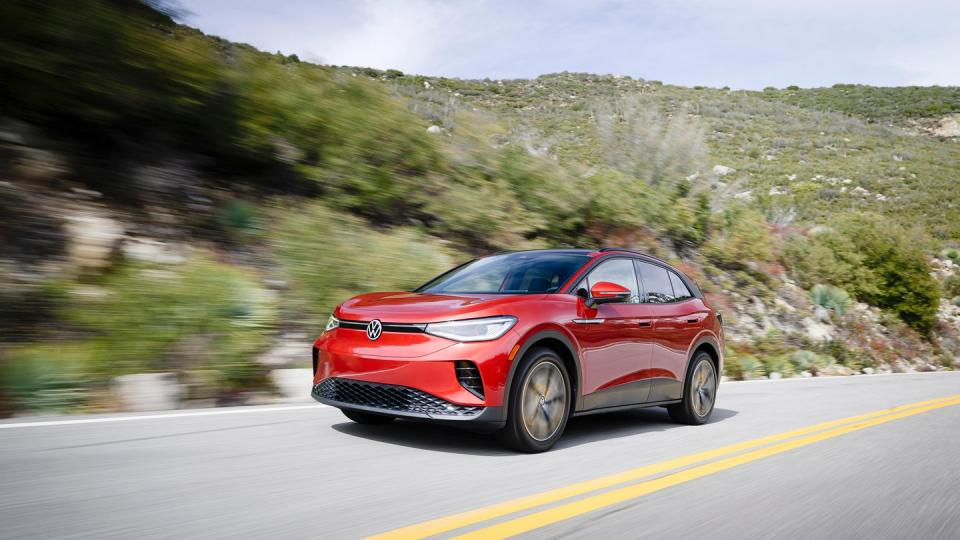
Volkswagen stops short of a facelift on the ID.4, but gives it a new rear motor and a new user interface on models with the 82-kWh battery.
The exterior remains the same.
Prices start at $41,160 for the entry-level 62-kWh battery model, while the fancier sibling with the bigger battery can be bought for $46,300 and up, both including destination.
For most cars, trucks and SUVs, three years on the market warrants at least a new set of headlights, a new grille, and maybe a trim around the taillights and a keister tuck. Not the Volkswagen ID.4. From the outside it looks exactly the same as it ever did. Under the skin and inside are where all the changes take place.
The 2024 model gets one new electric motor on its higher-priced variant—the one motor on the back axle in the 82-kWh model—and a new user interface on a new screen on the same 82-kWh model. The entry-level ID.4, meanwhile, with just 62 kWh of lithium-ion, carries on, its biggest attribute being that it costs a lot less with a smaller battery.
How much less? The smaller-batteried ID.4 base model starts at $41,160 with destination. The 82-kWh ID.4, the one that gets all the improvements, starts at $46,300, including destination.
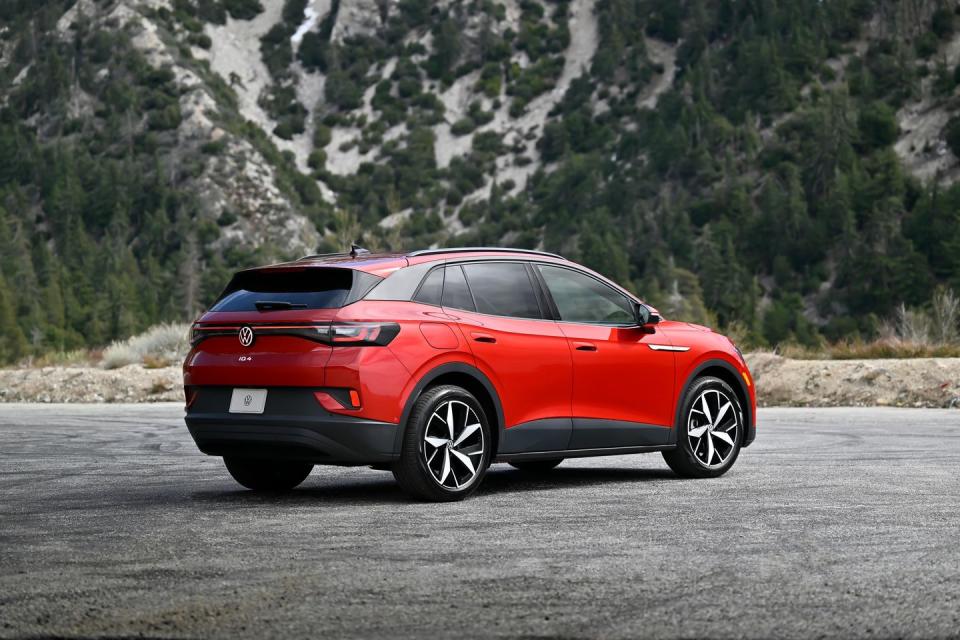
In addition to the new rear motor, the 82-kWh models get a more efficient and easier-to-use interface within a new 12.9-inch touchscreen infotainment display with backlit sliders.
Let’s have a look at that new rear electric motor. How did they make it better?
“Volkswagen uses a complex piece of technology known as a hairpin winding: The stator’s coils are made from square copper wires, which after bending, are visually similar to hairpins,” VW explains. “This hairpin winding technique enables the wires to be packed more tightly. As a result, there is more copper in the stator—power and torque are increased, while cooling is more efficient.”
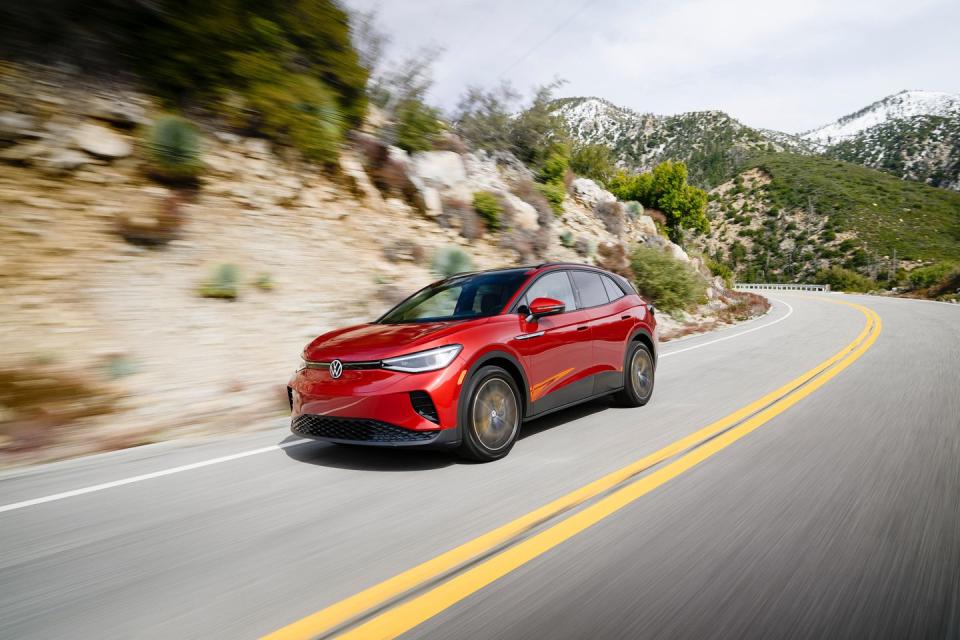
Sure, other manufacturers have been using square cross-section copper wires for years, decades, even, at least in alternators, but it’s good to see VW using the technology. Further, for you electrical engineers:
“The increased power and efficiency of the electric motor in the ID.4 are the result of details such as: a rotor with strong permanent magnets that offer a high thermal load capacity; an improved stator with a large effective number of windings in combination with maximum wire cross-section; a water heat sink for the outside of the stator; and a new, combined oil and water cooling system that also ensures higher thermal stability.
“The thermal stability is safeguarded by a new inverter generation, and the higher thermal load capacity is an elementary contributing factor to the increased efficiency of the new powertrain. Numerous gearbox components have also been friction-optimized and reinforced, and thus adapted to the high power and torque values.”
Hence, that rear-drive ID.4 motor makes 282 hp and 402 lb-ft of torque. If you get the 82-kWh model with all-wheel drive and its front-mounted electric motor driving the front wheels, total system output is 335 hp. VW lists torque for the AWD model as “99 front, 402 rear.” The base 62-kWh model has to manage with the same old motor and makes only 201 hp, 229 lb-ft of torque, and is only available in RWD.
We didn’t get a chance to try any 0-60 mph launches, but our colleagues at Car and Driver list that figure as 5.4 seconds for the new model, which isn’t bad for such a large, comfortable crossover.
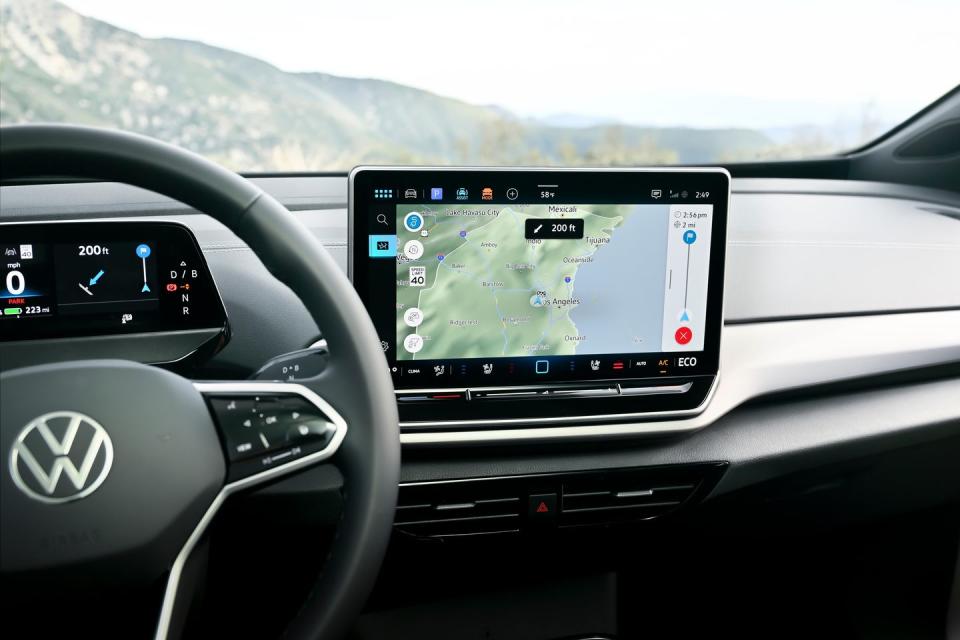
Inside, what stands out is that new screen and its new user interface. The screen is almost an inch larger diagonally than the previous screen, at least on the 82-kWh model (the 62-kWh model makes do with the previous 10-inch screen). The new screen can accommodate both wireless Apple Car Play and Android Auto.
You can configure the big screen to your preference, too. It will manage navigation, telematics, entertainment, driver-assistance systems, and vehicle settings. You can move menus using gesture control, simply by swiping your hand in front of the screen.
Sliders for volume and temperature adjustment are located on the inclined surface below the display. For models with the 12.9-inch screen, the sliders are backlit, and the climate control interface and infotainment menu have been revised for more intuitive operation, VW says.
I have never been a fan of those lit interiors, the ones with colorful ambient lights running through the cabin. They’re distracting. These seem popular on BMWs and Mercedes-Benzes. Now you can get it on your Volkswagen.
I got a short afternoon’s drive up and down Angeles Crest Highway in the new ID.4. I picked a RWD model with the 82-kWh battery, assuming that configuration would equal performance. Alas, this vehicle is more about efficiency and practicality than performance.
You didn’t expect it to be a canyon carver, did you? The Pirelli Scorpion 235/50R20s did hold on but did not inspire confidence in the way you’d expect from a RWD vehicle with 335 hp.
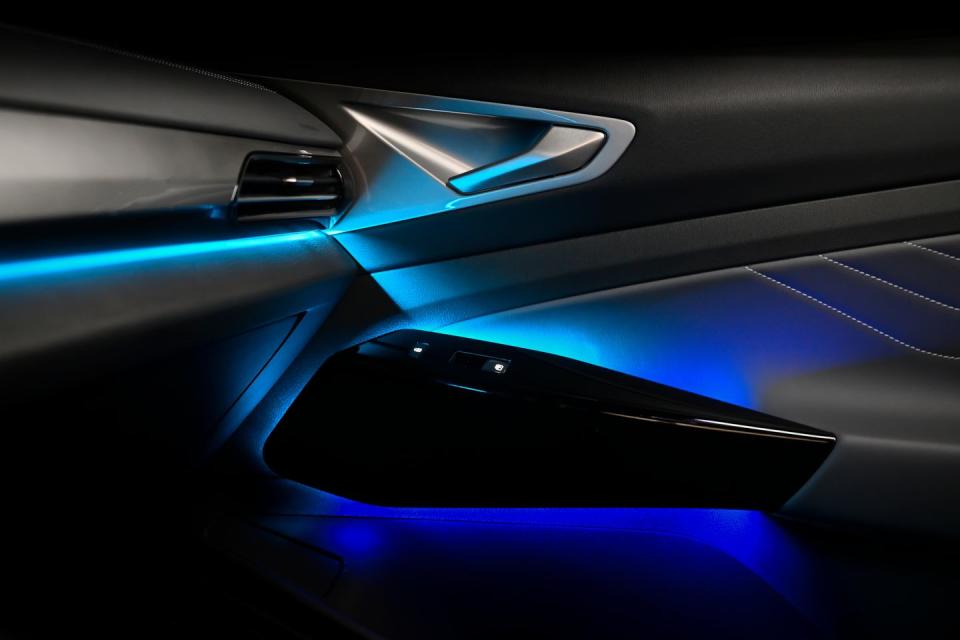
But body roll was surprisingly well managed in the ID.4, so much so that you had to consciously look for it to notice any at all. Road noise was so subdued as to be almost non-existent. And wind noise was likewise absent.
The best way to squeeze something out of the 2024 model is to put it in “Sport” mode, put the shifter into B for braking, and sort of pretend. There was not enough regenerative braking, in my opinion, even in B mode. The Nissan Leaf’s e-Pedal was much more aggressive, for instance, bringing the car to a full stop for truly one-pedal driving. Even Zero electric motorcycles have more regen. More regen, Volkswagen!
Likewise, the differences between Eco, Comfort, and Sport were less pronounced than I might’ve liked. But again, mileage was likely at the top of the list for the engineers designing this.
EPA range across the model lines goes from 206 miles in the 62-kWh ID.4 up to 291 miles in the RWD with the 82-kWh pack. The AWD version with the 82-kWh battery goes 263 miles.
So, should you get this or a Ford Mustang Mach-E, Hyundai Ioniq 5, Kia EV9 or EV6 or Honda Prologue? The 62-kWh ID.4 is the least expensive among entry-level versions of those competitors, by $2000 or more.
And having been on the market for three years, we can assume at least some if not all of the bugs have been worked out, compared to newcomers like the EV9 and Prologue. The styling of the Volkswagen entry is fairly bland, but in Germany that may be considered an attribute.
Volkswagen regularly states that, “Our future is electric” and has invested $195 billion toward that goal (albeit a goal forced on it by the whole Dieselgate thing). It’s well on its way to making that electric transition. All it needs is something with a more exciting character to go with its massive practicality. Maybe an ID. Buzz?
Would you get an ID.4 or some other electric SUV, or stick with internal combustion? Please comment below.

 Yahoo Autos
Yahoo Autos 